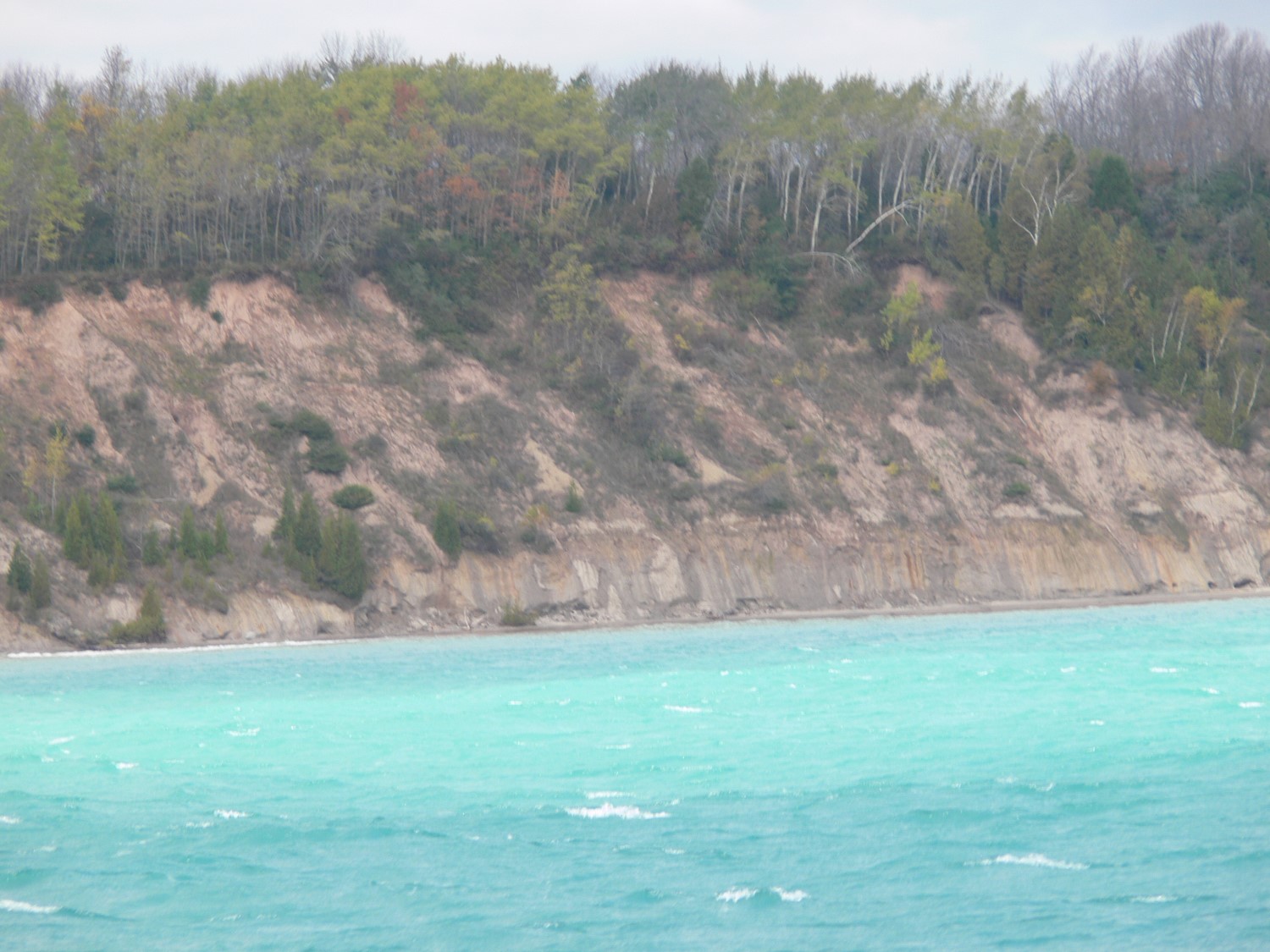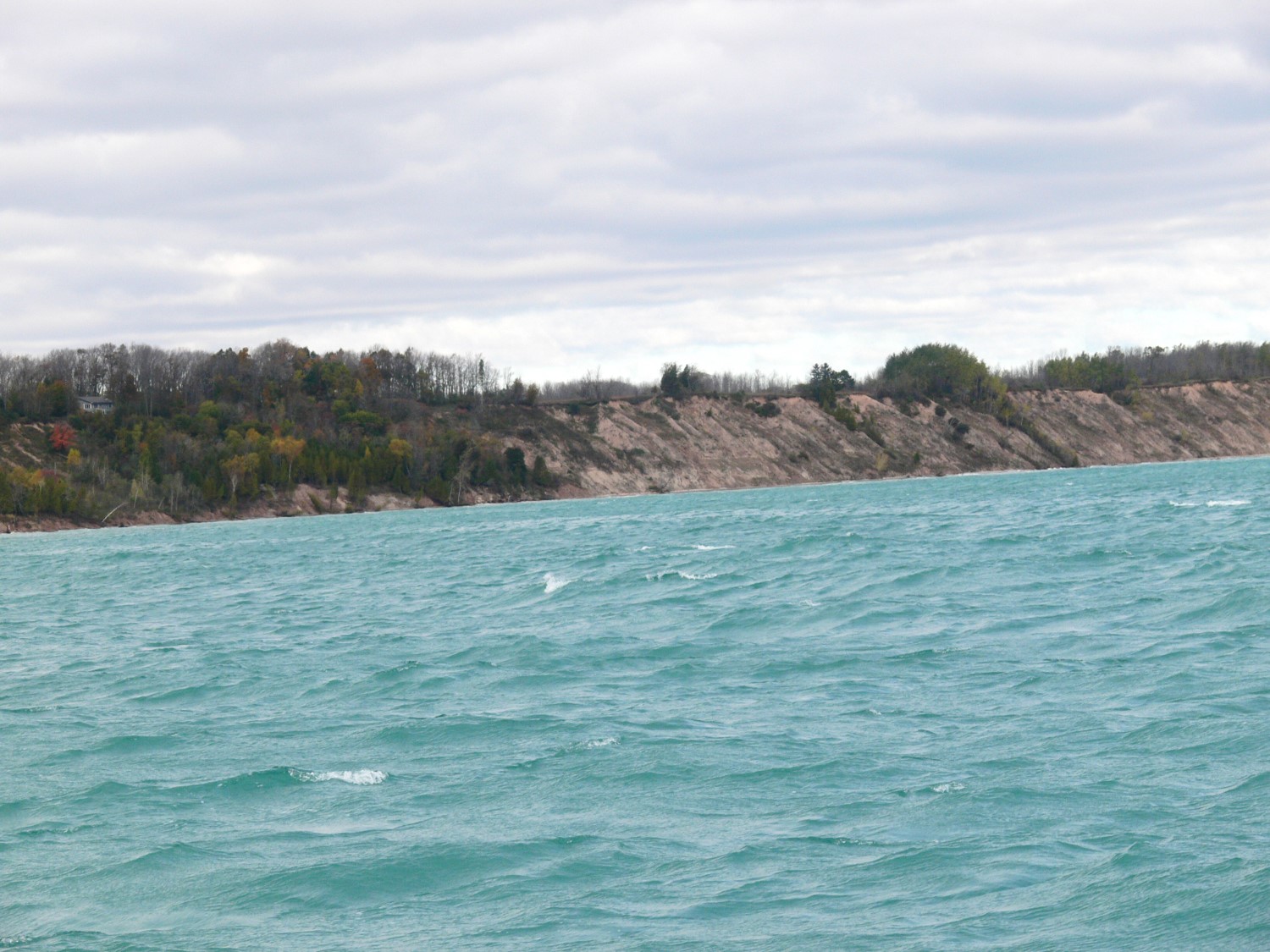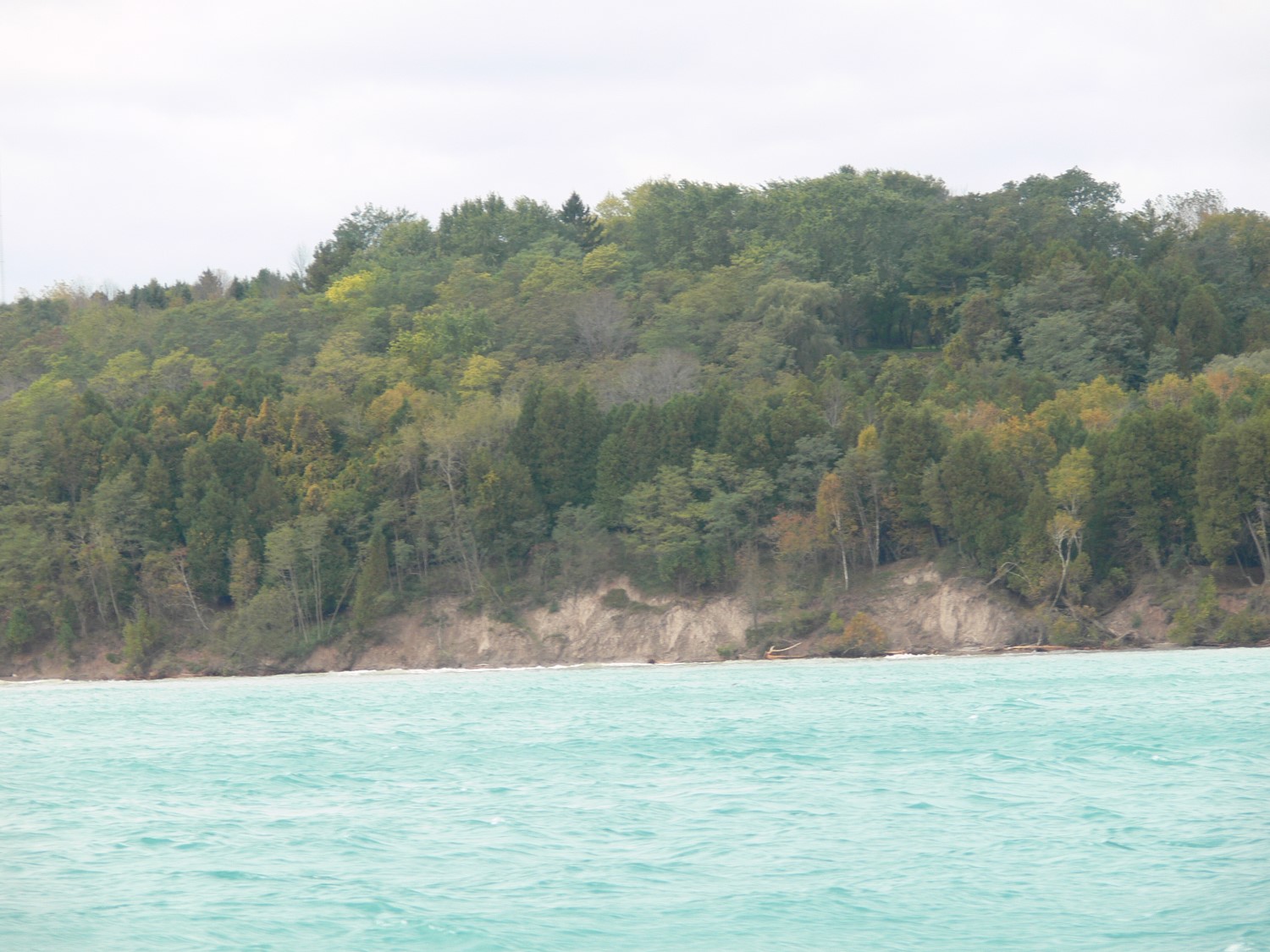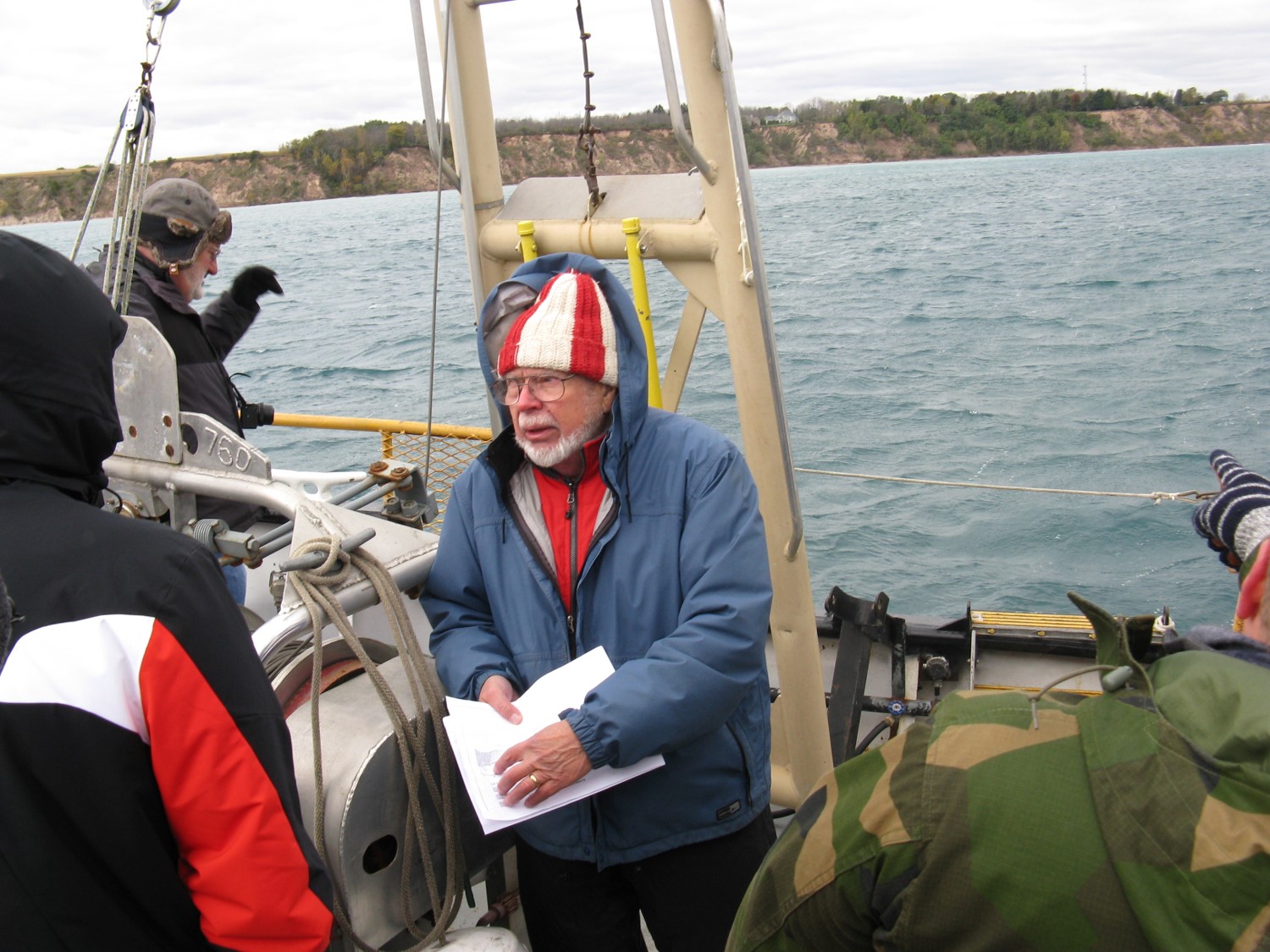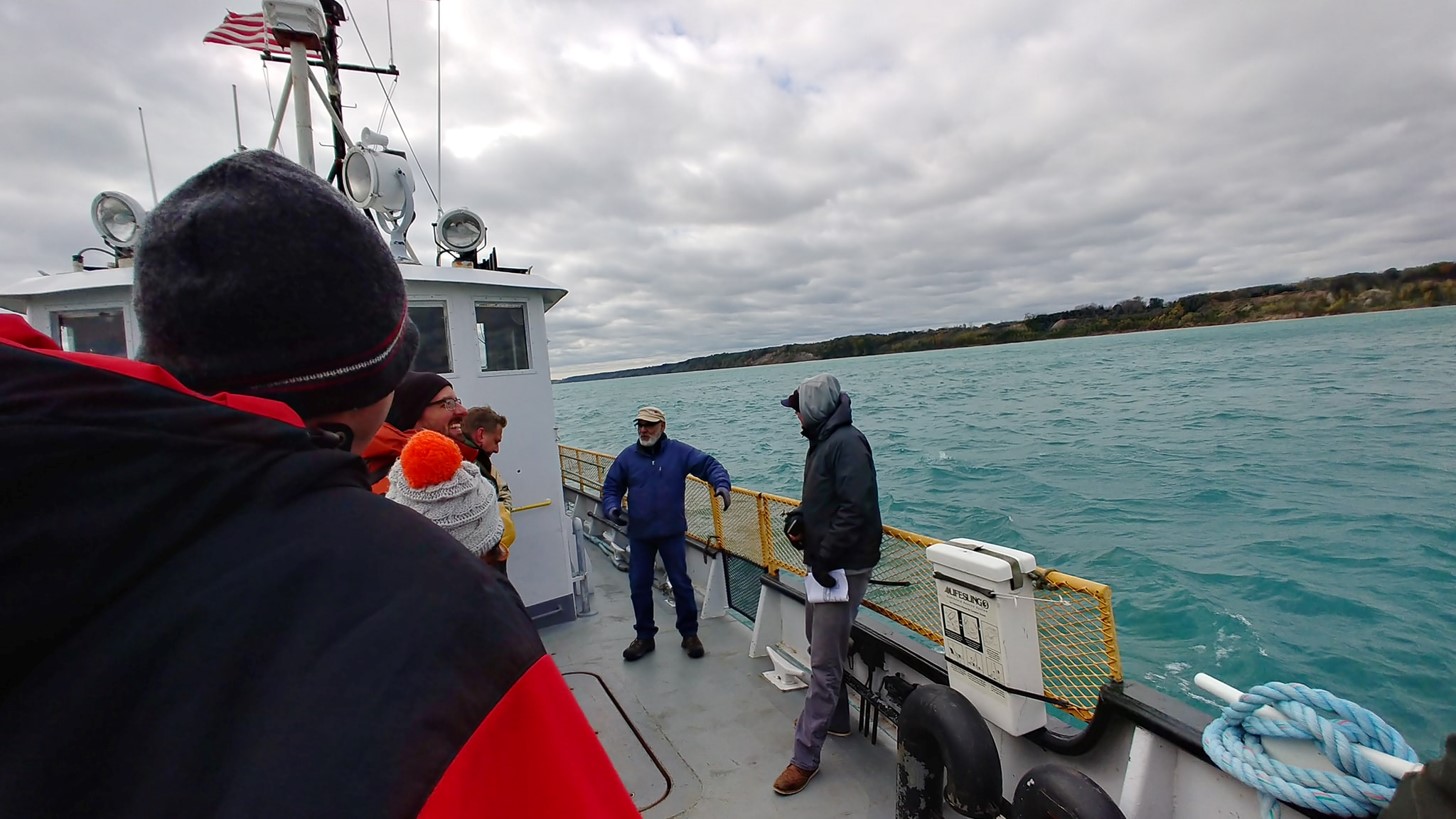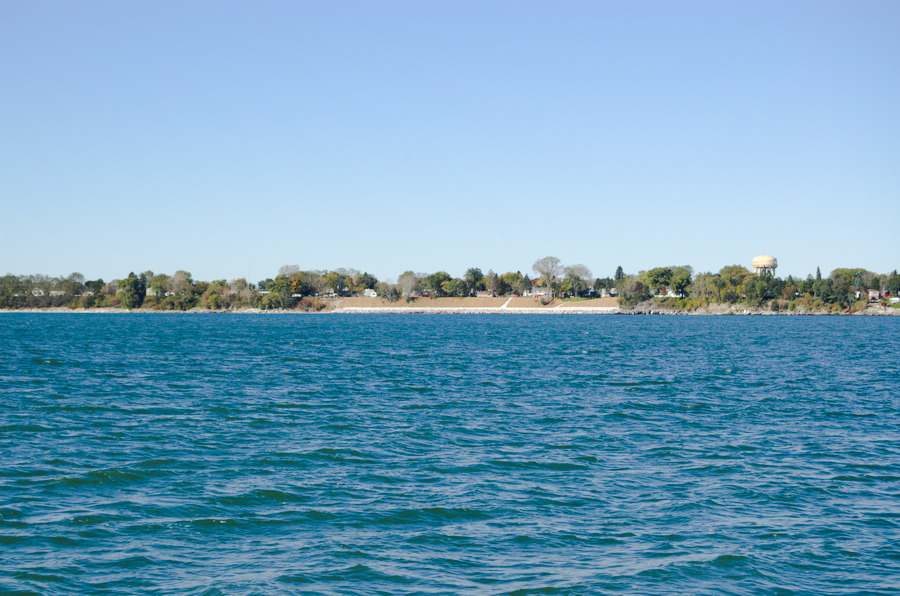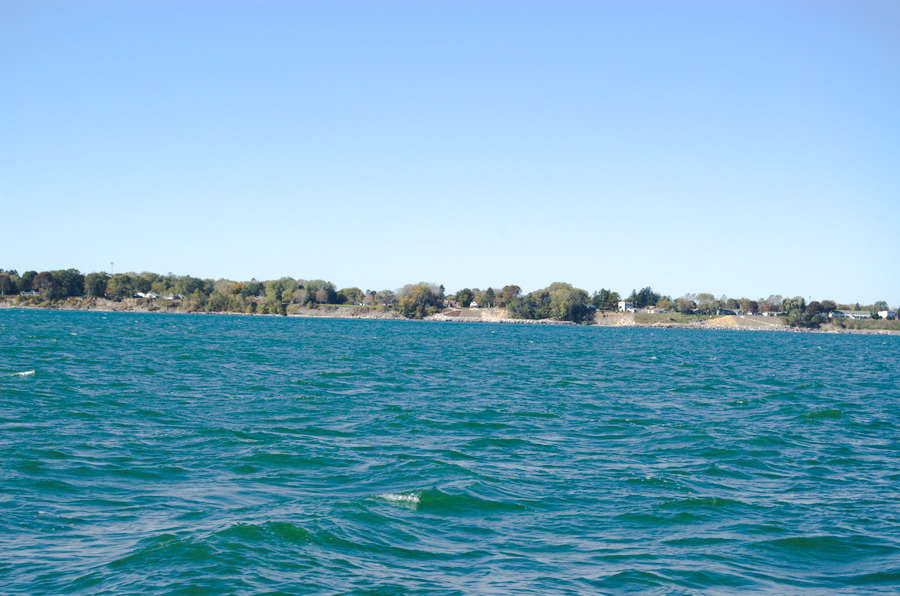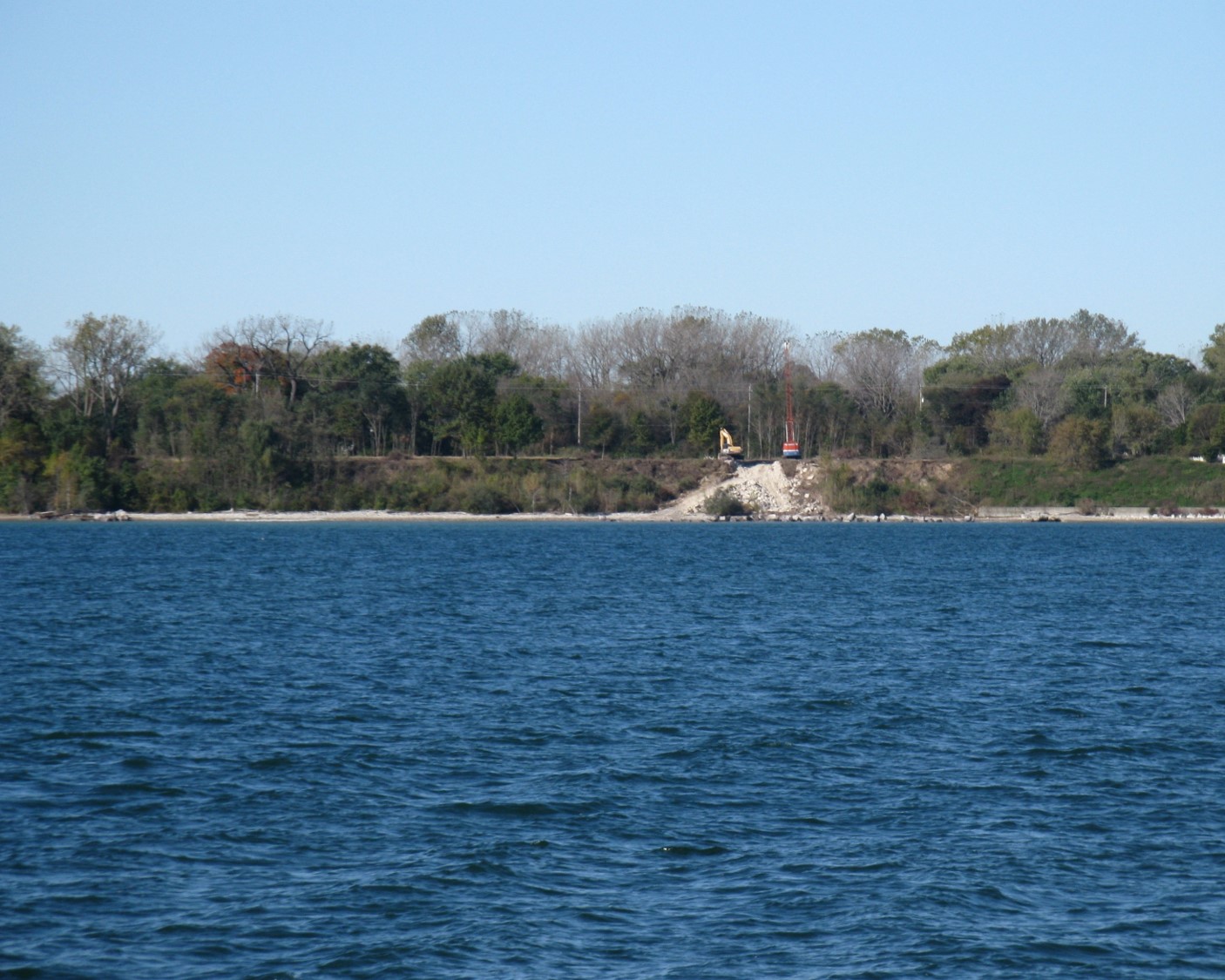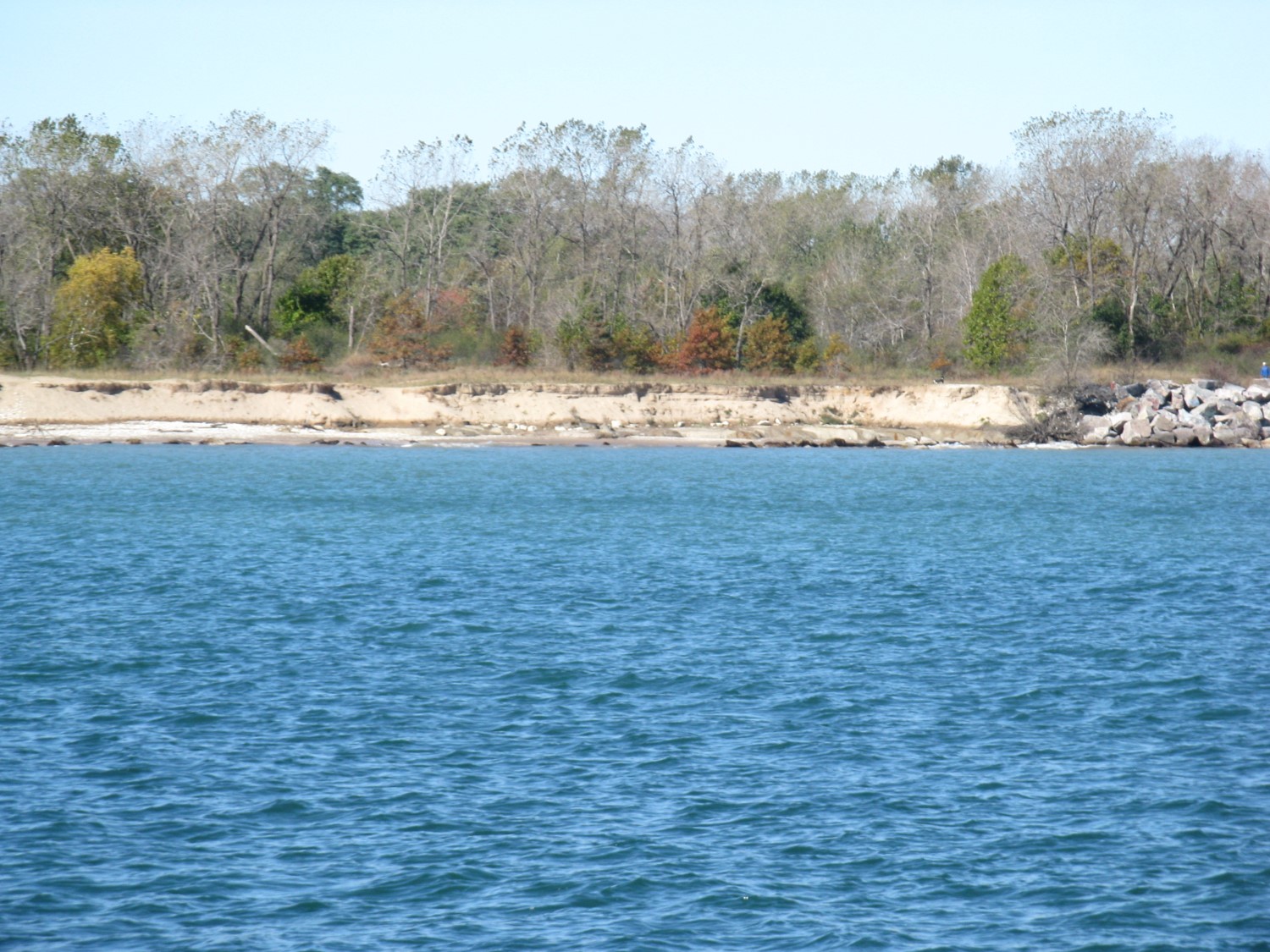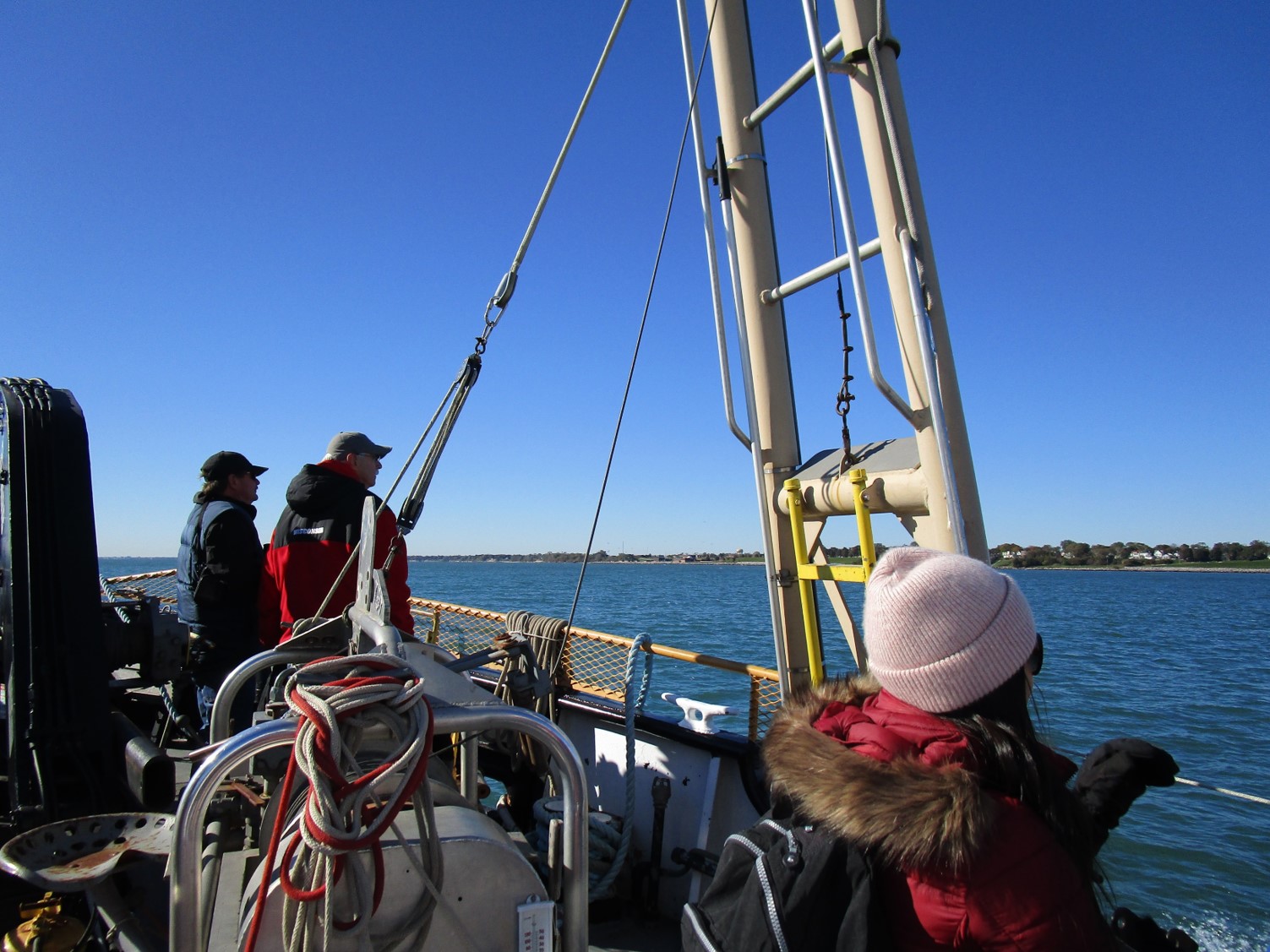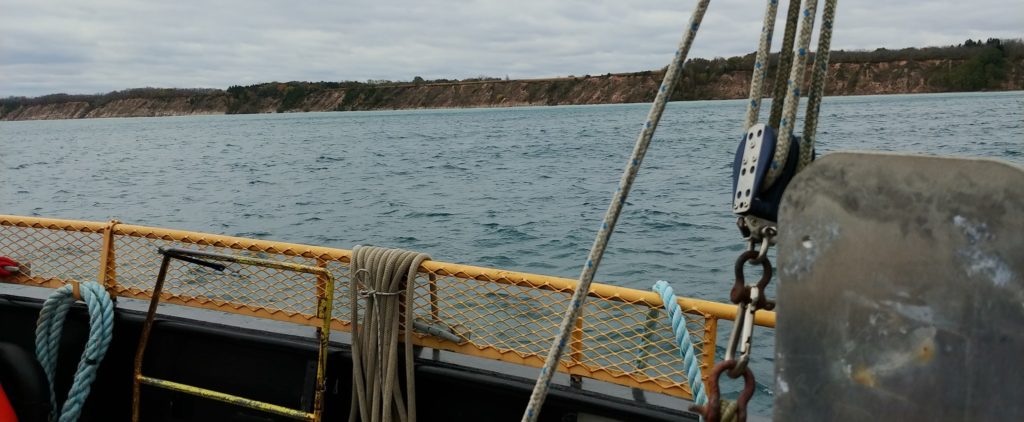
Coastal Resilience Boat Tours: A New Perspective on the Coast
The University of Wisconsin Sea Grant Institute hosted Coastal Resilience Boat Tours along the coast of Lake Michigan on the mornings of October 17th and October 18th out of Port Washington and Racine, respectively. County and municipal staff who participate in the Southeastern Wisconsin Coastal Resilience Community of Practice were invited to a cruise along the shoreline aboard the University of Wisconsin – Milwaukee’s School of Freshwater Sciences’ research vessel, the Neeskay. Coastal engineering and geology specialists were on board to answer questions about the coastal processes and structures visible on the shore while the boat tour participants provided their local knowledge and perspectives to the group.
Following a few hours on the water, everyone convened over lunch for a facilitated discussion about what was seen and what major challenges exist along the shoreline. This conversation was led by community facilitators Bert and Linda Stitt and focused on three questions:
- What did we see/experience on the boat tour?
- What can we do about these issues in the immediate future?
- What do we see as the most challenging steps going forward?
While the two boat tours were run similarly, differences in the coastline between the relatively undeveloped shoreline of the Port Washington area and the heavily armored shores of the Racine and Kenosha area led to quite different sights. However, the conversations that took place on the boat and after the tour had many common themes between the two trips. Below is a summary of each tour and a reflection on the opportunities to build coastal resilience discussed on the boat and during the facilitated conversations.
Port Washington Tour
The journey from Port Washington Marina started precariously on the morning of October 17th. While the marine forecast called for one foot waves, 3 to 5 foot swells had rolled in overnight from the north. With the knowledge that the rough conditions may cut the tour short, 14 brave souls boarded the vessel and headed south from Port Washington for what proved to be a surprisingly smooth but chilly cruise. As we traveled down the coast, participants were struck by the impressively tall bluffs of 100 feet and more, as well as the evidence of Lake Michigan’s power in steep erosional scarps at the bluff toe. Though few homes appeared to be in immediate peril, this erosion is the start of a destabilization process that can lead to major bluff recession. Midway through the journey near Lion’s Den Nature Preserve, we noticed a rather stark transition from relatively bare bluffs with patchy vegetation to the north to a well vegetated section of the coast to the south. According to professor Dave Mickelson, the well vegetated section has existed since at least the 1970s and appears to be a large bluff slump that carried living trees down with it as it failed. The reason why this vegetated slump block has remained intact is not fully know but it has been speculated to be related to groundwater conditions that are favorable to bluff stability. Many participants remarked at the relatively “natural” appearance of the shoreline, as very little shore protection has been placed at the base of the bluffs in this area of the coast. After about an hour cruising south, the Neeskay turned back north into the swells for a cool and sometimes wet ride back to Port Washington.
Once on dry land, we had a chance to share our thoughts on what we saw. Most participants commented on striking view of the bluffs from the water and the major effects Lake Michigan can have on these features. Some participants noted the erosion and lack of shore protection gave them the impression that the shore looked vulnerable while others were inspired by the dynamic and natural appearance of the coast. A productive discussion ensued about how this coastline can be managed and how we can work together on these issues. All of the participants expressed gratitude for the unique view of the shoreline that they experienced and wished more individuals in their communities would have the opportunity appreciate beauty of this shoreline and challenges faced in managing it.
Racine-Kenosha Tour
The Racine-Kenosha boat trip left from the Racine Marina on the morning of October 18th for a much warmer, sunnier and calmer tour than was experienced aboard the Neeskay the day prior. Heading south, we saw Samuel Myers Park and heard about its restoration from City of Racine staff. Shortly thereafter, we viewed the newly constructed revetment in Mount Pleasant that protects 40-foot-high bluffs from erosion that was encroaching upon Village road and utility infrastructure as well as numerous homes. A staff member from Mount Pleasant explained to the group how this project came together between the Village and multiple property owners. As we continued south through Mount Pleasant and Somers, we saw large variation in the state of the coast – from severely eroding bluffs and failing shore protection structures to well-protected properties and a handful of under-construction shore protection projects. Participants were struck by this patchwork of differences that seemed to change starkly on a parcel-by-parcel basis. Our tour continued past the City of Kenosha to the Kenosha Dunes State Natural Area, which was another exhibit of the power of Lake Michigan. At this site, a failing stone revetment constructed in the 1970s has allowed waves to erode the Dunes at a rapid rate of 20 to 40 feet per year since 2014, severely impacting this ecologically sensitive area. The coastal engineering specialists onboard shared the ongoing plans to address the erosion at this site with an innovative shore protection design. The Neeskay then turned back north for a sunny ride back to Racine Harbor.
The group discussion over lunch at the Racine Marina elicited responses from all participants and revealed a great deal of common ground. Participants asked about the range of shoreline conditions that were seen along this shoreline and what constituted “good” versus ”bad” shore protections practices. Many were struck by the seemingly sporadic range of efforts to protect the coast and wondered about the prospect of collaboration to work together on these projects. Local community staff also shared their experiences with helping their coastal residents, exchanged ideas for assisting property owners and offered suggestions to the specialists on their outreach needs. Many of the participants felt a desire to continue their conversations and idea sharing in the future to help their approaches to coastal issues. Much like the day before, the participants were grateful for the opportunity to view the shoreline from the water and many gained a new appreciation for the challenges facing coastal property owners.
Main Themes from the Boat Tours
These two days on the water were time well spent with local government staff who are both dealing with hazards to municipal lands and helping their residents with erosion issues on private property. Reflecting on the conversations on the boat and over lunch, some common themes came out that can provide direction going forward. These themes are written here as opportunities for building coastal resilience:
- Provide a vision for what the shoreline could look like in the future (both positive and negative) to spur action
- Elevate the conversation about shoreline issues within local governments
- Protect public infrastructure without negatively impacting private property.
- Provide a view of shoreline to property owners who can’t readily see their property from the water
- Educate property owners to make informed decisions and understand the need to prepare for coastal hazards
- Enable or support residents to act together rather than individually in “patchwork” efforts to address erosion
- Identify what resources and points-of-contact (DNR, zoning staff, etc.) are available to help private property owners dealing with coastal hazards
- Increase awareness of buyouts and/or retreat as a viable option to address erosion issues
We hope to pursue many of these opportunities in the Southeastern Wisconsin Coastal Resilience Project in the near future.
A special thanks goes out to Captain Greg and the crew of the R/V Neeskay for two great tours of the Lake Michigan coast!
October 20, 2018 | By Adam Bechle, Coastal Resilience Outreach Specialist, Wisconsin Sea Grant
